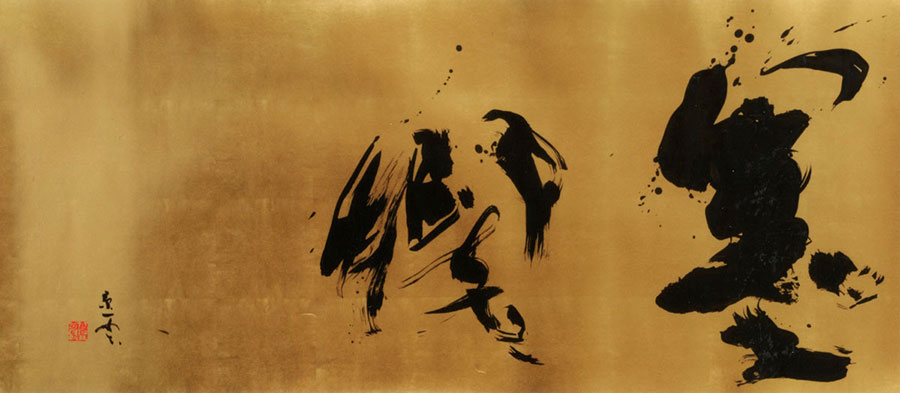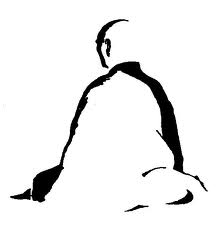Are Nirvana and samsara one ? Huxley, the Perennial Philosophy
That nirvana and samsara are one is a fact about the nature of the Universe; but it is a fact which cannot be fully realized or directly experienced, except by souls far advanced in spirituality. For ordinary, nice, unregenerate people to accept this truth par hear-say, and to act upon it in practice, is merely to court disaster.
Nature and grace, samsara and nirvana, perpetual perishing and eternity, are really and experientially one only to persons who have fulfilled certain conditions. Fac quod vis (do what you want) in the temporal world — but only when you have learnt the infinitely difficult art of loving God with all your mind and heart and your neighbour as yourself. If you haven’t learnt this lesson, you will either be an eccentric or criminal or else a respectable well-rounded-lifer, who has left himself no time to understand either nature or grace. The Gospels are perfectly clear about the process by which, and by which alone, someone may gain the right to live in the world as though he were at home in it: he must make a total denial of selfhood, submit to a complete and absolute mortification…/
The Pharisees reproached Jesus because he ‘came eating and drinking,’ and associated with ‘publicans and sinners’; they ignored or were unaware of, the fact that this apparently worldly prophet had at one time rivaled the physical austerities of John the Baptist and was practising the spiritual mortifications which he consistently preached. The pattern of Jesus’life is essentially similar to that of the ideal sage, whose career is traced in the ‘Oxherding Pictures,’ so popular among Zen Buddhists.

The wild ox, symbolizing the unregenerate self, is caught, made to change its direction, then tamed and gradually transformed from black to white. Regeneration goes so far that for a time the ox is completely lost, so that nothing remains to be pictured but the full-orbed moon, symbolizing Mind, Suchness, the Ground. But this is not the final stage. In the end, the herdsman comes back to the world of human, riding on the back of his ox. Because he now loves, loves to the extent of being identified with the divine object of his love, he can do what he likes; for what he likes is what the Nature of Things likes. He is found in company with wine-bibbers and butchers; he and they are all converted into Buddhas.
For him, there is complete reconciliation to the evanescent and, through that reconciliation, revelation of the eternal. But for nice ordinary unregenerate people the only reconciliation to the evanescent is that of indulged passions, of distractions submitted to and enjoyed. To tell such persons that evanescence and eternity are the same, and not immediately to qualify the statement, is positively fatal – for, in practice, they are not the same except to the saint; and there is no record that anybody ever came to sanctity who did not, at the outset of his or her career, behave as if evanescence and eternity, nature and grace, were profoundly different and in many respects incompatible.

As always, the path of spirituality is a knife-edge between abysses. On one side is the danger of mere rejection and escape, on the other the danger of mere acceptance and the enjoyment of things which should only be used as instruments or symbols.
The versified caption which accompanies the last of the ‘Ox-herding Pictures’ runs as follows:
Even beyond the ultimate limits there extends a passage-way,
By which he comes back to the six realms of existence.
Every worldly affair is now a Buddhist work,
And wherever he goes he finds his home air.
Like a gem he stands out even in the mud,
Like pure gold he shines even in the furnace.
Along the endless road (of birth and death) he walks sufficient unto himself.
In all circumstances he moves tranquil and unattached.
…/
It is in the Indian and Far Eastern formulation of the Perennial philosophy that this subject is most systematically treated. What is prescribed is a process of conscious discrimination between the personal self and the Self that is identical with Brahman, between the individual ego and the Buddha-womb or Universal Mind. The result of this discrimination is a more or less sudden and complete revulsion of consciousness, and the realization of a state of no-mind which may be described as the freedom from perceptual and intellectual attachement to the ego-principle.
To achieve it one must walk delicately and, to maintain it, must learn to combine the most intense alertness with a tranquil and self-denying passivity, the most indomitable determination with a perfect submission to the leadings of the spirit.
If an eye never falls asleep,
all dreams will cease of themselves;
Il the Mind retains its absoluteness,
the ten thousand things are one substance.
(The Third patriarch of Zen)

Laisser un commentaire